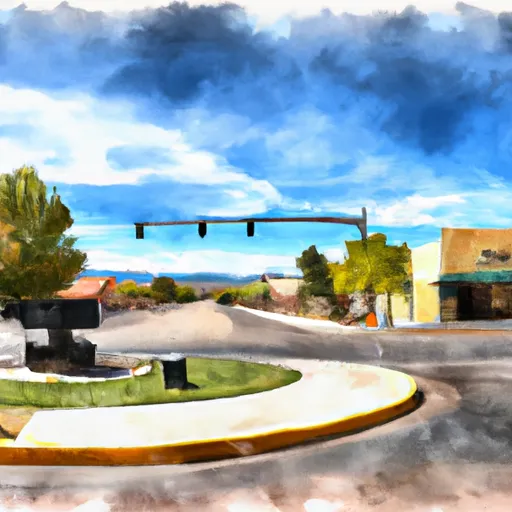-
 Snoflo Premium
Snoflo Premium
Get unlimited access to all our content
With no Ad interruptions! - Start Your Free Trial Login with existing account
Mammoth
Eden Index
Climate
8.9
•
Recreation
3.2
•
Community
0.7
•
Safeguard
4.8/10

Mammoth, Arizona is a small town situated in Pinal County, at an elevation of approximately 2,000 feet. The climate in Mammoth is characterized by hot summers and mild winters. Summer temperatures often exceed 100°F, while winter temperatures average around 60°F during the day. The region experiences a dry weather pattern, with an average annual precipitation of around 12 inches.
Hydrology constituents in Mammoth primarily revolve around the San Pedro River, which runs adjacent to the town. The river provides essential habitat for various plant and animal species, including several endangered species. It also serves as a valuable water source for agriculture and local communities.
Mammoth offers several outdoor recreation opportunities for nature enthusiasts. The nearby San Pedro Riparian National Conservation Area provides opportunities for hiking, birdwatching, and wildlife viewing. Visitors can also explore Catalina State Park, located a short drive away, which offers camping, hiking trails, and scenic mountain views. Additionally, the area is popular for off-roading, with numerous trails available for 4x4 enthusiasts.
In conclusion, Mammoth, Arizona experiences hot summers and mild winters, and its hydrology constituents revolve around the San Pedro River. Visitors can enjoy outdoor activities such as hiking, birdwatching, camping, and off-roading in the region.
What is the Eden Index?
The Snoflo Eden Index serves as a comprehensive rating system for regions, evaluating their desirability through a holistic assessment of climate health, outdoor recreation opportunities, and natural disaster risk, acknowledging the profound impact of these factors on livability and well-being.
Climate Health Indicator (CHI): 8.9
Mammoth receives approximately
338mm of rain per year,
with humidity levels near 47%
and air temperatures averaging around
20°C.
Mammoth has a plant hardyness factor of
9, meaning
plants and agriculture in this region tend to thrive here all year round.
By considering the ideal temperature range, reliable water supplies, clean air, and stable seasonal rain or snowpacks, the Climate Health Indicator (CHI) underscores the significance of a healthy climate as the foundation for quality living.
A healthy climate is paramount for ensuring a high quality of life and livability in a region, fostering both physical well-being and environmental harmony. This can be characterized by ideal temperatures, reliable access to water supplies, clean air, and consistent seasonal rain or snowpacks.
Weather Forecast
Streamflow Conditions
San Pedro-Willcox
Area Rivers
San Pedro-Willcox
Snowpack Depths
San Pedro-Willcox
Reservoir Storage Capacity
San Pedro-Willcox
Groundwater Levels
Recreational Opportunity Index (ROI): 3.2
The Recreational Opportunity Index (ROI) recognizes the value of outdoor recreational options, such as parks, hiking trails, camping sites, and fishing spots, while acknowledging that climate plays a pivotal role in ensuring the comfort and consistency of these experiences.
Access to outdoor recreational opportunities, encompassing activities such as parks, hiking, camping, and fishing, is crucial for overall well-being, and the climate plays a pivotal role in enabling and enhancing these experiences, ensuring that individuals can engage in nature-based activities comfortably and consistently.
Camping Areas
| Campground | Campsites | Reservations | Toilets | Showers | Elevation |
|---|---|---|---|---|---|
| Pioneer Pass | 20 | 5,835 ft | |||
| Peppersauce | 17 | 4,602 ft | |||
| Spencer Canyon | 60 | 7,858 ft | |||
| Molino Basin | 37 | 4,338 ft | |||
| General Hitchcock | 11 | 5,971 ft | |||
| Rose Canyon | 74 | 7,034 ft | |||
| Pinal | 14 | 7,544 ft |
Nearby Fishing
Catastrophe Safeguard Index (CSI):
The Catastrophe Safeguard Index (CSI) recognizes that natural disaster risk, encompassing floods, fires, hurricanes, and tornadoes, can drastically affect safety and the overall appeal of an area.
The level of natural disaster risk in a region significantly affects safety and the overall livability, with climate change amplifying these risks by potentially increasing the frequency and intensity of events like floods, fires, hurricanes, and tornadoes, thereby posing substantial challenges to community resilience and well-being.
Community Resilience Indicator (CRI): 0.7
The Community Resilience Indicator (CRI) recognizes that education, healthcare, and socioeconomics are crucial to the well-being of a region. The CRI acknowledges the profound impact of these elements on residents' overall quality of life. By evaluating educational resources, healthcare accessibility, and economic inclusivity, the index captures the essential aspects that contribute to a thriving community, fostering resident satisfaction, equity, and social cohesion.

